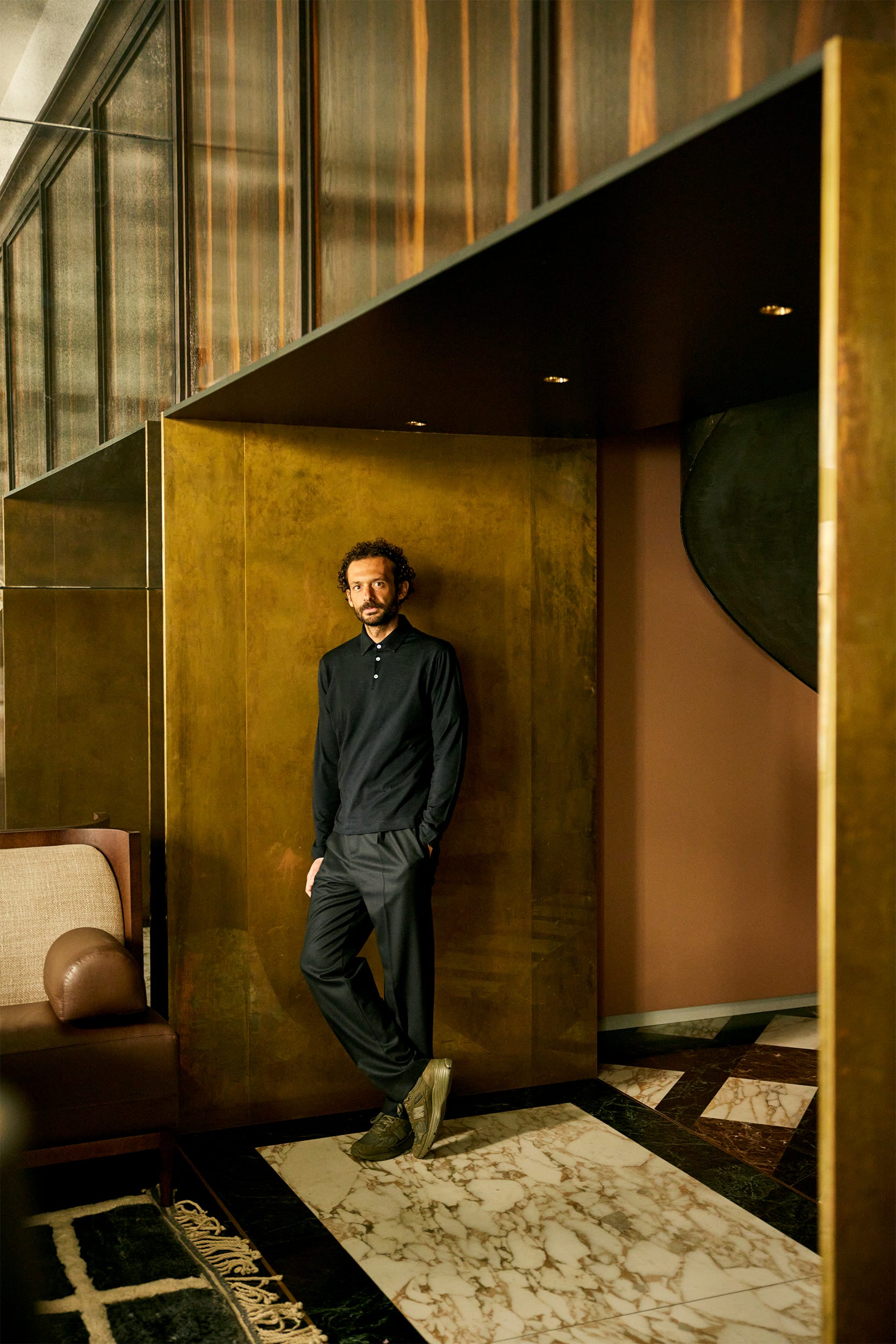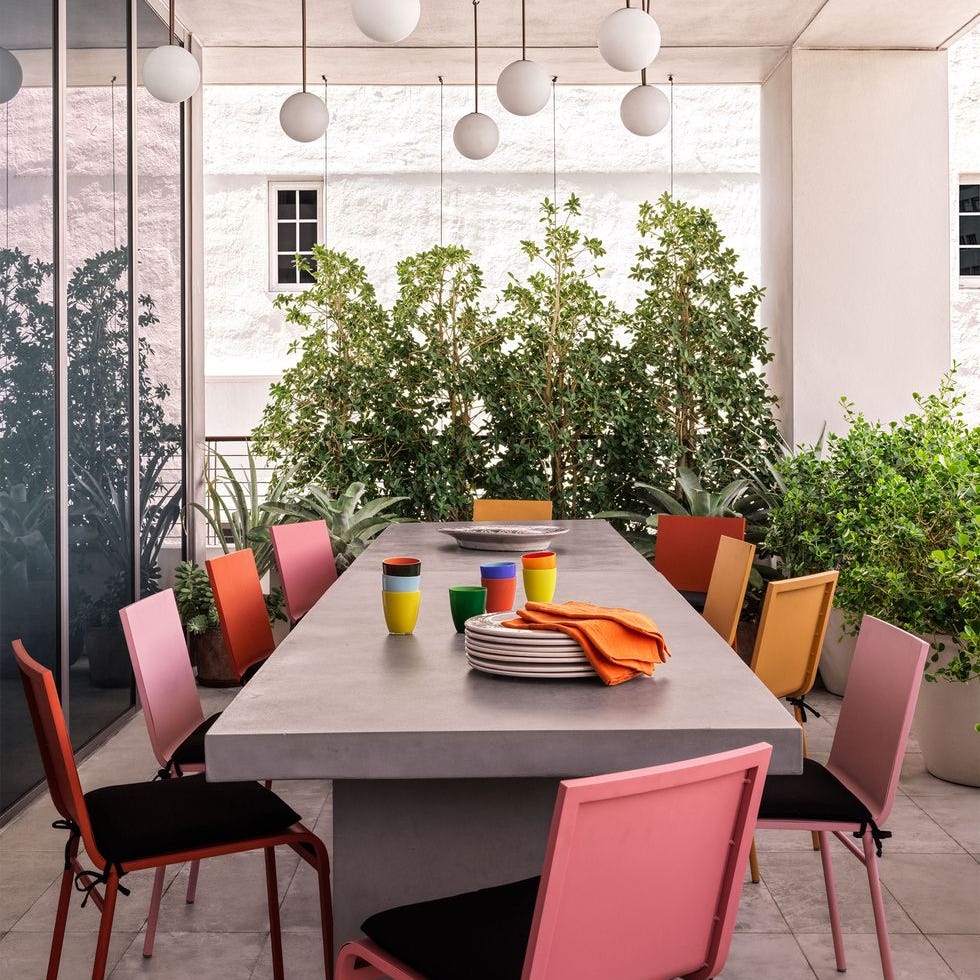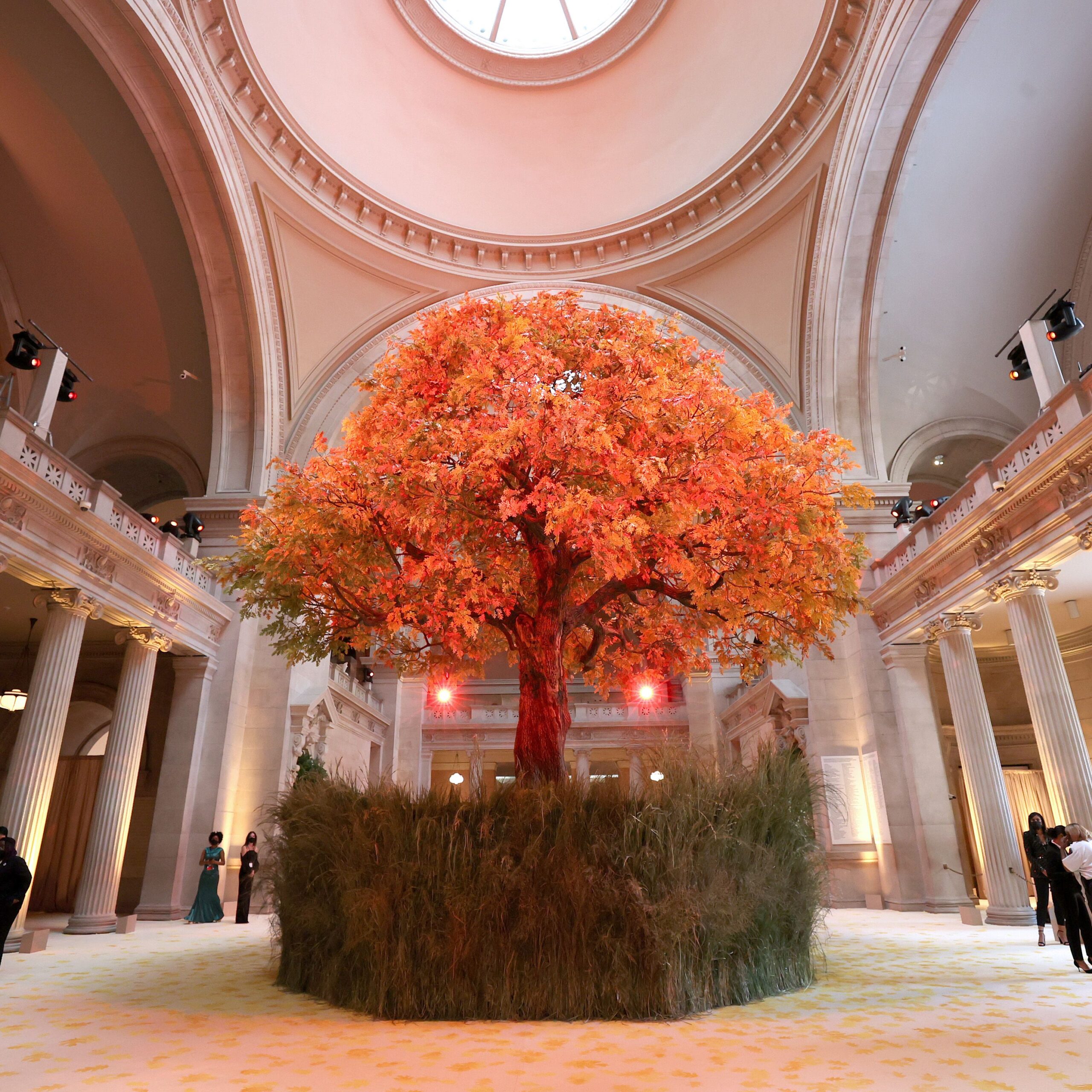Two decades ago, Remo Ruffini, owner of the Milan-based sportswear brand Moncler, hired the French studio Gilles & Boissier to design his yacht. Patrick Gilles and Dorothée Boissier outfitted the gulet-style sailboat with hand-hewn wooden furnishings and oak-lined walls. Ruffini was so pleased with the results he later commissioned them to furnish several of his residences and to bring their dramatic style to Moncler boutiques worldwide.
Since founding their studio in 2004, the designers have become known for interiors that make a bold impression with monochromatic palettes, classical details, and rich materials such as marble, oak, and bronze. Partners in life and work, they have been tapped for such lavish hospitality projects as New York’s Baccarat Hotel and the Mandarin Oriental in Marrakech, as well as stylish European homes from Lake Como to Biarritz. But their collaboration with the Ruffini family has proved the most enduring.
Now Remo’s elder son Pietro Ruffini, the founder and CEO of the investment firm Archive, which holds stakes in several lifestyle brands and the Langosteria restaurant group, has enlisted the Elle Decor A-List design firm to completely reimagine his Milan apartment. He had been living in the space—formerly used as the family’s office—for several years before he felt ready to start a renovation. He recently decided the time was right, and he knew who to call. “I’ve known Gilles & Boissier since I was 13 or 14,” Pietro says. “It felt natural to ask them for help with my first home of my own.”
The designers were already familiar with the building, an Art Nouveau–style palazzo in the city’s historic center where Pietro’s father and younger brother Romeo also have Gilles & Boissier–designed homes. “If you see my dad’s house and my brother’s home, you recognize the same hand, but they’re totally and radically different,” Pietro says.
His father, whose main residence is in Como, had requested a Paris-inspired atmosphere for his Milan pied-à-terre, but Pietro told the design duo that he wanted something more rooted in Italian design history. “We wanted to create something luxurious: a city apartment with rich color,” Gilles says of the interiors he and Boissier envisioned for the U-shaped space, which overlooks a courtyard filled with towering palm trees.
The designers drew inspiration from some of Milan’s most revered interiors, including Piero Portaluppi’s 1934 Villa Necchi, the crosshatched marble and travertine floors of which are subtly echoed in Ruffini’s entry. There are also bolder, more contemporary elements, notably the black steel spiral staircase that leads to a loft space repurposed as a gym.
Stylistic variation from room to room adds structure within the apartment’s open plan. The hallway has a ’70s feel, while the den’s tree-patterned wallpaper lends a forest ambiance. Yet a consistent color and material palette—dark stained wood, brass accents, glossy black finishes—visually unifies the space. In the main living area, which spans the width of the building, a pair of tall glass display cabinets subtly divide the room into distinct zones. Pietro loves to entertain, so there is a formal dining space and a lounge with a zinc-topped bar and bistro tables, evoking the glamour of a Parisian nightclub.
By contrast, the apartment’s private quarters offer a sense of retreat—although they are no less theatrical. A dark corridor leads to Pietro’s all-white primary bedroom, which is bathed in natural light. “Sometimes in David Lynch’s films, everything is pitch black except for one small, focused light,” Gilles says. “That mood really inspired me.”
Pietro also selected the living room’s bronze-toned mirror by Milanese architect Vincenzo de Cotiis; its sculptural quality aligns perfectly with the room’s sensual aesthetic. Across from it hangs an artwork by Julian Schnabel composed of broken shards of black pottery; the work blends enigmatically into the dark wood paneling. Pietro had been looking for years for just the right Schnabel piece. “I’m not the kind of collector who just buys things and figures out where to put them later,” he says. “I try to envision each area carefully and think about what fits.” ◾
This story originally appeared in the Summer 2025 issue of Elle Decor. SUBSCRIBE




